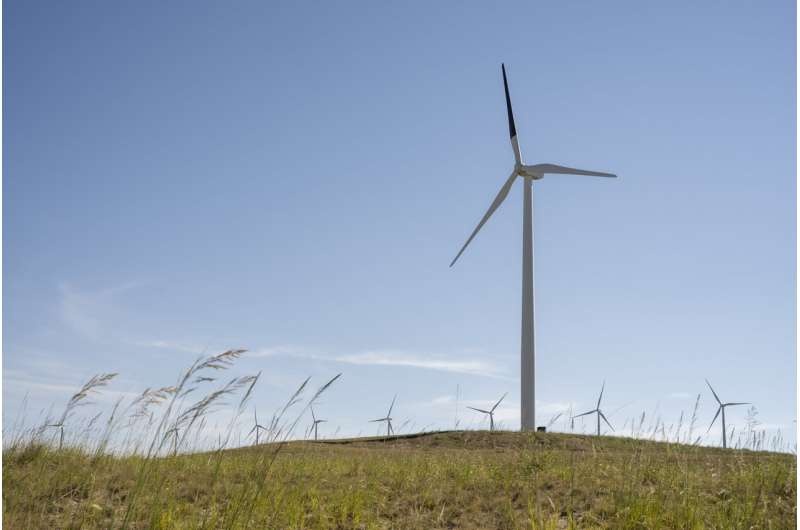Researchers at Oregon State University are exploring a unique approach to reducing bird collisions with wind turbines – painting a single blade black. This study aims to understand the impact of this visual cue on bird behavior and its potential to save thousands of avian lives each year.

Overthrowing the Colorless Sky
The researchers suspect that the extra black on the blade will break up the visual continuity of a wind turbine, making it more apparent to birds. The theory is that it will cause daytime-active species of birds, most notably eagles so far, to see the turbine and have some kind of avoidance response.
That’s a stark break from the past, when wind turbines were mostly painted all one shade of white or gray, so as to blend in with the sky and be less visible to passing birds. The idea is that they can hopefully use the birds’ visual systems to better see and avoid the turbines more effectively by introducing a counteracting element.
Impact on various species — Research work
The most detailed study of these effects has been designed to look for whether the painted blades may be affecting birds and/or bats. An energy company, PacifiCorp, one of the largest in the West, has agreed to undergo a test with 1 blade on their farm in Wyoming.
A major part of the research looks at golden eagles, a species that is especially susceptible to being killed by wind turbines. One of the doctoral students, Natia Javakhishvili, is using a huge dataset of 8 million golden eagle movement points to improve the precision of the model research. This refined look at how eagles move through and between turbines, roads, and power lines will give the team much better tools to plan avoid those hazards in ways that benefit these amazing birds.
Researchers are also looking for effects on other bird species besides golden eagles, including ferruginous hawks and bats. The use of the painted blades indicates that they may be more visible to birds, which rely on vision for finding food and other resources, than bats — with each species likely having different visual capabilities when approaching the wind turbines.
Conclusion
The consequences that may arise from such a study on the wind energy industry and wildlife conservation strategies are considerable. The findings can help wind energy companies, as well as regulators, to construct impervious strategies that will be able to decrease bird and bat collisions with wind farm turbines. Through solutions such as painted blades, the researchers are working to mitigate the challenge associated with increased demand for energy and at the same time protect species vulnerable to extinction.
